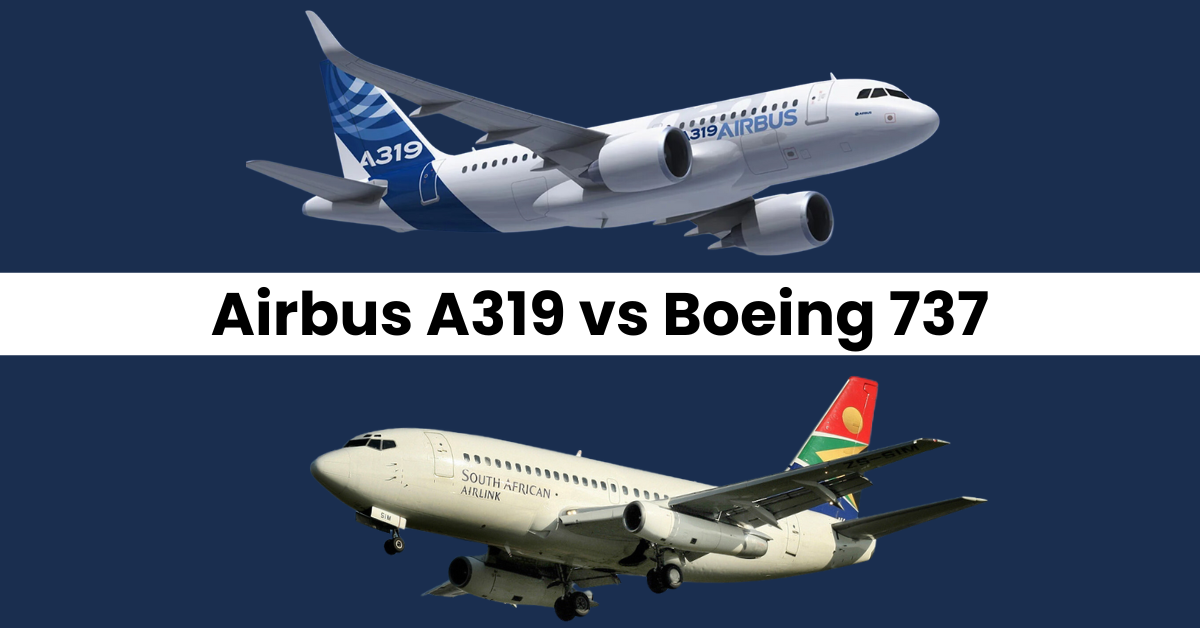When it comes to choosing the right aircraft for short to medium-haul flights, two names stand out in the aviation industry: the Airbus A319 vs Boeing 737. Both airliners have carved out significant niches for themselves, offering airlines around the globe efficiency, reliability, and flexibility. In this comparison, we delve into the intricacies of these two models, examining their performance metrics, passenger capacity, operational efficiency, and technological advancements. Whether you’re an aviation enthusiast or a professional in the field, understanding the distinctions between the Airbus A319 and the Boeing 737 is crucial for recognizing their impact on modern air travel. Join us as we explore what sets these aircraft apart and how they continue to shape the future of aviation.
Airbus A319 vs Boeing 737
When comparing the Airbus A319 vs Boeing 737 MAX , several key differences and similarities come to light. Both aircraft are designed with a cockpit crew of two and are equipped to handle similar ranges of passenger capacities, although the Boeing 737 MAX variants can accommodate slightly more passengers, with exit limits ranging up to 230 compared to the A319’s 160/150. The Airbus A319, with its typical two-class seating for 124 passengers, is slightly outpaced by the Boeing 737 MAX’s capacity, which varies across its models, offering configurations such as 138/162/178/188 seats. Cargo capacity also sees a variance, with the A319 providing 27.7 cubic meters, while the 737 MAX expands its offerings up to 51.4 cubic meters depending on the variant.

Here’s a detailed comparison table between the Airbus A319 vs Boeing 737 MAX, focusing on their key characteristics such as dimensions, capacity, performance, and other relevant specifications.
| Specification | Airbus A319 | Boeing 737 Max |
|---|---|---|
| Cockpit Crew | Two | Two |
| Exit Limit | 160 / 150 | 172/200/220/230 |
| 1-Class Max. Seating | 156 at 28–30 in pitch | 153/178/193/204 |
| 1-Class Typical Seating | 134 at 32 in pitch | 123-130/140+/175+/177-215 |
| 2-Class Typical Seating | 124 (8F @ 38 in, 116Y @ 32 in) | 138/162/178/188 |
| Cargo Capacity | 27.7 m³ (980 cu ft) | 1,543–1,814 cu ft (43.7–51.4 m³) |
| Length | 33.84 m (111 ft 0 in) | 116.7–143.7 ft (35.56–43.8 m) |
| Wingspan | 35.8 m (117 ft 5 in) | 117 ft 10 in (35.92 m) |
| Wing Area | 122.4 m² (1,318 sq ft) | 1,370 sq ft (127 m²) |
| Wing Sweepback | 25 degrees | Not specified |
| Tail Height | 11.76 m (38 ft 7 in) | 40 ft 4 in (12.29 m) |
| Cabin Width | 3.70 m (12 ft 2 in) | Fuselage: 148 inches (3.8 m), Cabin: 139.2 inches (3.54 m) |
| Fuselage Width | 3.95 m (13 ft 0 in) | 148 inches (3.8 m) |
| Operating Empty Weight (OEW) | 40.8 t (90,000 lb) | MAX 8: 99,360 lb (45,070 kg) |
| Maximum Takeoff Weight (MTOW) | 75.5 t (166,000 lb) | 177,000–194,700 lb (80,300–88,300 kg) |
| Maximum landing weight (MLW) | 62.5 t (138,000 lb) | 65,317 kg (144,300 lbs) |
| Cruising Speed | Mach 0.78 (829 km/h; 515 mph) | Mach 0.745 – Mach 0.82 (430–473 kn; 796–876 km/h; 494–544 mph) |
| Maximum Speed | Mach 0.82 (871 km/h; 541 mph) | Mach 0.82, which equates to 473 knots or 867 km/h. |
| Range, Typical Payload | 3,750 nmi (6,940 km; 4,320 mi) | 3,300–3,850 nmi (6,110–7,130 km; 3,800–4,430 mi) |
| Takeoff Distance (MTOW, SL, ISA) | 1,850 m (6,070 ft) | 1,890 m (6200 ft) |
| Landing Distance (MLW, SL, ISA) | 1,360 m (4,460 ft) | 1,433 m (4,700 ft) |
| ACJ range | 6,000 nmi (11,100 km; 6,900 mi) | 4,200 nmi or 7,800 km |
| Fuel Capacity | 24,210–30,190 L (6,400–7,980 US gal) | 6,853 US gal (25,940 L) |
| Service Ceiling | 39,100–41,000 ft (11,900–12,500 m) | Not specified directly for MAX variants |
| Engines (×2) | CFM56-5B / IAE V2500A5 | CFM LEAP-1B |
| Engine Power | 98 kN (22,000 lbf), with option for 105 kN (24,000 lbf) | up to 29,300 lbf (130 kN) |
| Fuel Economy Per Seat | 2.82 L/100 km (83.5 mpg‑US) | 2.93 L/100 km (80.2 mpg‑US) |
| Country of Origin | France | United States |
| Price (USD) | $89.6 Million | $80 Million |
This table consolidates and compares a wide range of specifications for the Airbus A319 and the Boeing 737 MAX , providing a comprehensive overview of their differences and similarities.
Airbus A319
The Airbus A319 is a versatile and efficient narrow-body airliner that’s part of the renowned Airbus A320 family. Known for its reliability and comfort, the A319 is designed to meet the demands of short to medium-haul flights, catering to a wide range of airline operations. It typically seats around 124 to 156 passengers, offering a blend of comfort and efficiency with a cabin designed for traveler satisfaction. With a range of up to 3,750 nautical miles, it can easily handle various route lengths, making it a popular choice among airlines worldwide. The A319’s engines, either the CFM56-5B or IAE V2500A5, provide a good balance between power and fuel efficiency, contributing to its eco-friendly profile. Its operational flexibility, combined with Airbus’s commitment to innovation and technology, makes the A319 a strong contender in the aviation industry for airlines prioritizing versatility and cost-effectiveness.
Boeing 737

The Boeing 737 is one of the most popular and best-selling commercial jetliners in the world. Designed as a short to medium-range airliner, it has become a favorite among airlines for its reliability, efficiency, and versatility. The 737 comes in various models, catering to different needs and capacities, but generally, it’s known for its ability to transport a large number of passengers over a wide range of distances. With a design that emphasizes fuel efficiency and operational cost-effectiveness, the 737 series has continually evolved, incorporating the latest technology and innovations, such as the advanced Boeing 737 MAX variants. These improvements have made the 737 even more appealing by reducing operational costs and environmental impact. Airlines around the globe rely on the Boeing 737 for its proven performance, making it a cornerstone of commercial aviation fleets.
Airbus A319 vs Boeing 737 Engines & Fuel
When comparing the engines and fuel efficiency of the Airbus A319 vs Boeing 737, it’s clear that both aircraft are designed with a focus on performance and environmental sustainability. The Airbus A319 is equipped with either CFM56-5B or IAE V2500A5 engines, known for their reliability and fuel efficiency. This aircraft boasts a fuel capacity that allows it to embark on journeys of up to 3,750 nautical miles, making it an excellent choice for airlines looking to optimize fuel consumption on medium-haul routes.
On the other hand, the Boeing 737, especially its newer MAX variants, is powered by the advanced CFM LEAP-1B engines. These engines provide significant improvements in fuel efficiency and reduced emissions, aligning with the aviation industry’s goals for a greener future. The 737 MAX has demonstrated its ability to cover longer distances with its increased fuel capacity, offering ranges that extend up to 3,850 nautical miles. This comparison highlights the strides both Airbus and Boeing have made in developing aircraft that not only meet the demands of modern travel but also prioritize efficiency and environmental responsibility.
Airbus A319 vs Boeing 737 Which One is Better?
Deciding whether the Airbus A319 or the Boeing 737 is better depends on what criteria you prioritize. The Airbus A319 shines for its efficiency and comfort, making it a top pick for airlines operating short to medium-haul routes with a focus on passenger satisfaction. Its wider cabin can offer a more comfortable experience for passengers. On the flip side, the Boeing 737, particularly with its MAX variants, stands out for its higher passenger capacity and extended range capabilities, appealing to airlines looking to maximize their operational flexibility across a variety of routes. The 737’s advancements in fuel efficiency also make it a competitive option for cost-conscious carriers. Ultimately, the “better” choice hinges on the specific needs of the airlines and their passengers, including route length, passenger volume, and operational costs. Both aircraft have their unique strengths, making them valuable assets to the fleets they serve.
Airbus A319 vs Boeing 737 Seating
When comparing the seating configurations of the Airbus A319 vs Boeing 737, there are a few key points to consider. The Airbus A319 typically offers seating for 124 to 156 passengers, with options for both one-class and two-class layouts. Its design allows for a bit more space per passenger, thanks to its wider cabin, providing a comfortable experience, especially on shorter flights.
The Boeing 737, on the other hand, can accommodate a broader range of passenger capacities across its variants, with some of the newer MAX models designed to carry even more passengers. This makes the 737 a versatile choice for airlines looking to maximize capacity, particularly on popular routes. However, the comfort level can vary depending on the specific layout and cabin design chosen by each airline. In summary, while the A319 offers a slightly more spacious feel for passengers, the 737 provides flexibility in seating capacity, catering to airlines’ needs for efficiency and scale.
Airbus A319 vs Boeing 737 Pricing
When comparing the pricing of the Airbus A319 and its newer variant, the A319neo, with the Boeing 737-800 and 737-900ER models, we notice a distinctive range reflecting each aircraft’s features and market position. The Airbus A319 is priced at $89.6 million, offering an efficient and cost-effective solution for short to medium-haul flights. Its updated version, the A319neo, comes with a list price of $101.5 million, which reflects enhancements in fuel efficiency and operational capabilities. On the other hand, the Boeing 737-800, equipped with engines from Pratt & Whitney, GE, or Rolls-Royce, is tagged at $106.1 million, indicating its broader capacity and range capabilities. The larger 737-900ER, primarily equipped with Pratt & Whitney and GE engines, is priced higher at $112.6 million, catering to airlines needing even more capacity and extended range.
| Aircraft Model | Engine Options | New Price (USD) |
|---|---|---|
| Airbus A319 | – | $89.6M |
| Airbus A319neo | – | $101.5M |
| Boeing 737-800 | Pratt & Whitney, GE, ROLLS-ROYCE | $106.1M |
| Boeing 737-900ER | Pratt & Whitney, GE | $112.6M |
Conclusion
The Airbus A319 vs Boeing 737 stand as pillars in commercial aviation, each offering distinct advantages. The A319 excels in efficiency and comfort, perfect for short to medium routes with fewer passengers. Meanwhile, the Boeing 737, especially the MAX variants, caters to a broader market with its higher capacity and longer range. Both models feature cutting-edge engines and eco-friendly designs, highlighting their commitment to performance and sustainability. Choosing between them hinges on airline priorities and the dynamic needs of global air travel. The ongoing innovation from Airbus and Boeing ensures that both the A319 and the 737 continue to push the boundaries of aviation technology and passenger comfort.
FaQs
What are the main differences between the Airbus A319 vs Boeing 737?
Which aircraft is more fuel-efficient, the Airbus A319 or the Boeing 737?
Can the Airbus A319 and Boeing 737 operate on similar flight routes?



